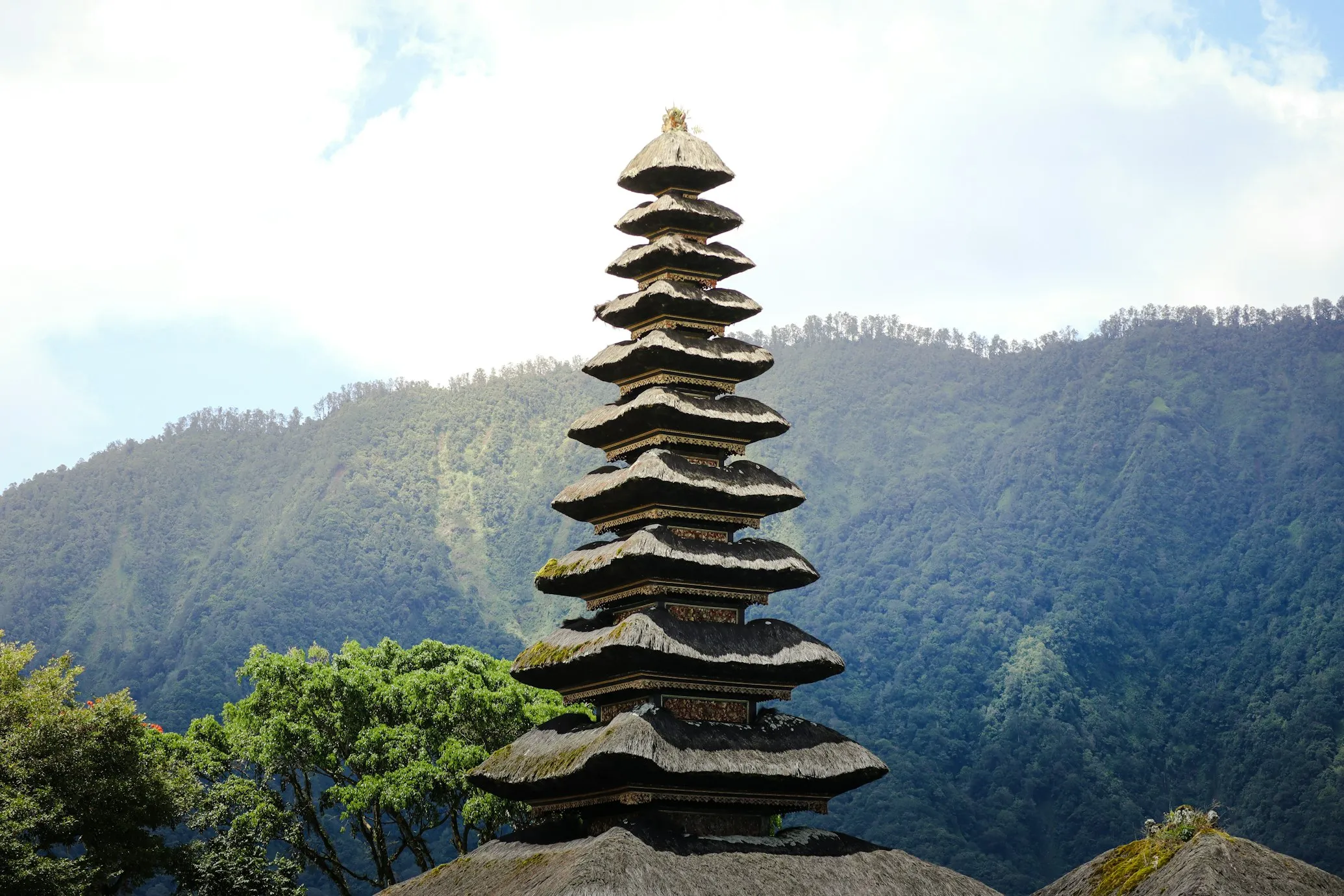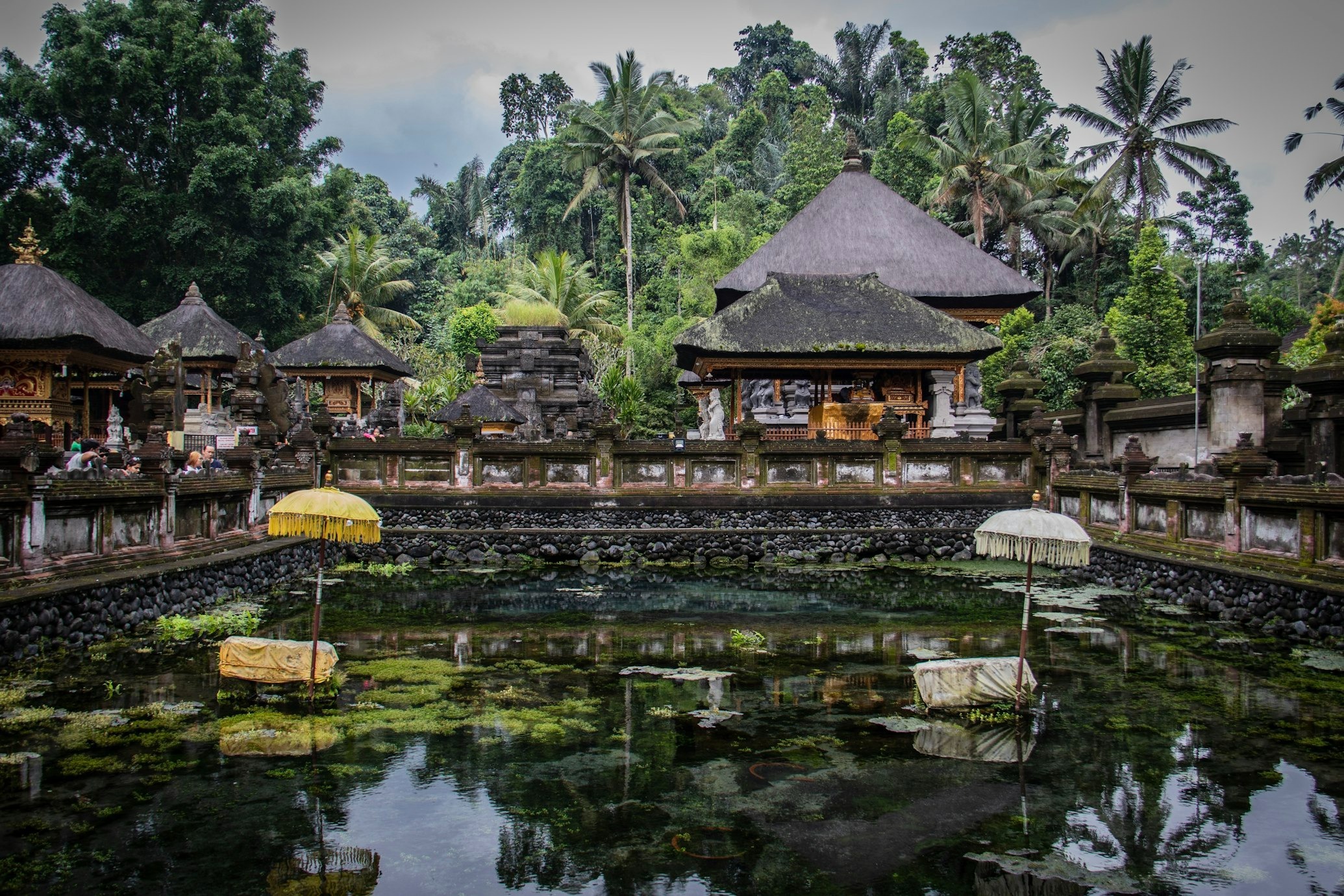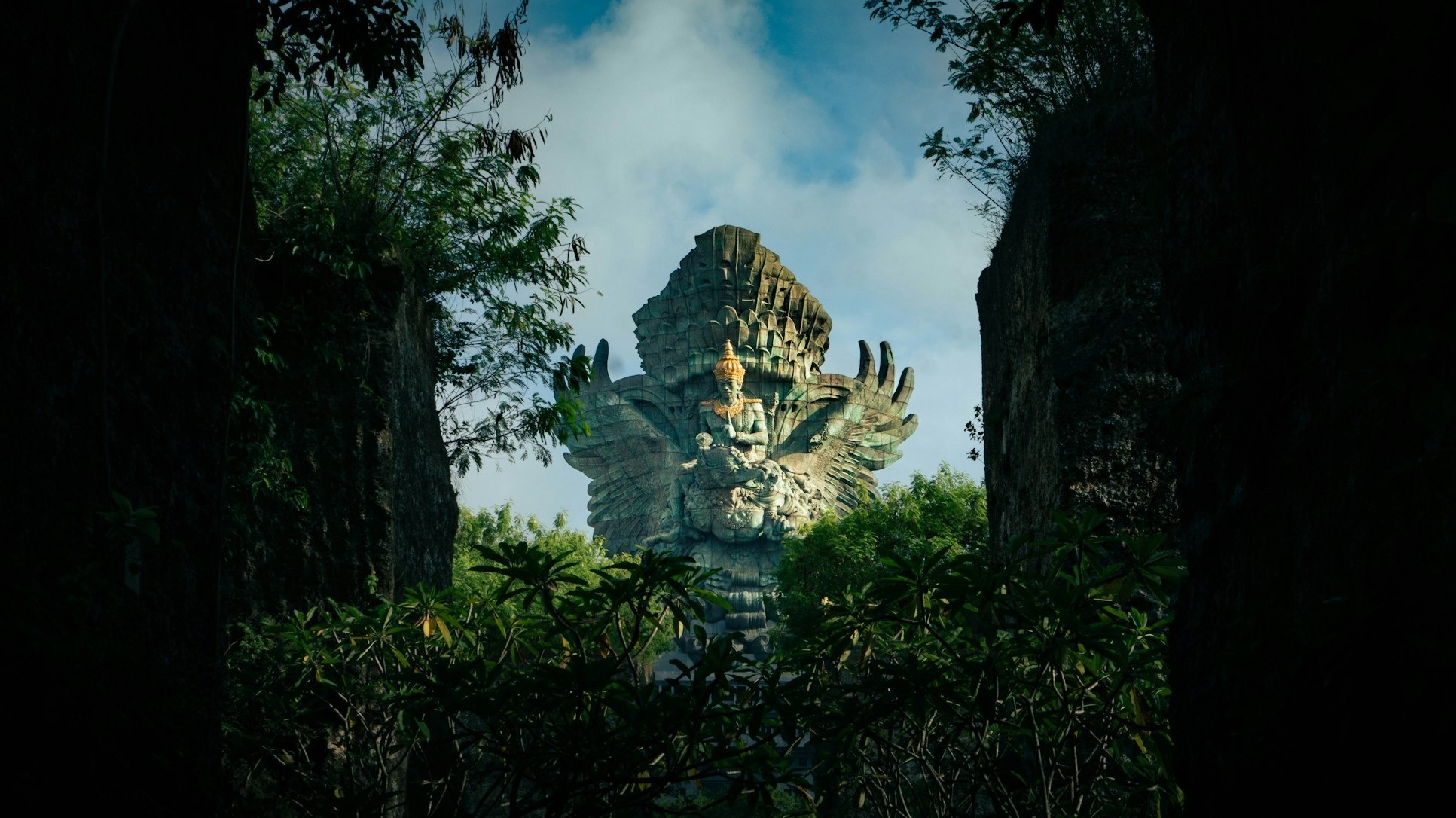Tirta Empul Temple is a sacred water temple in Bali, Indonesia, known for its holy spring water. Located in the village of Tampaksiring, about 30 kilometers from Ubud, the temple is an important spiritual site for Balinese Hindus. It was built in the 10th century during the Warmadewa dynasty and is dedicated to Lord Vishnu, the god of water.
The highlight of Tirta Empul is its large purification pool, where devotees and visitors take part in a traditional cleansing ritual. The water flows from 13 stone spouts, and people line up to bathe under each one, believing it cleanses the body and soul. The temple complex also includes courtyards, shrines, and a peaceful koi pond, creating a serene atmosphere.
Visitors can explore the temple’s beautiful Balinese architecture, observe local religious ceremonies, or even take part in the purification process by renting a sarong at the entrance. The temple is open to both worshippers and tourists, but modest clothing and respectful behavior are required.
Tirta Empul Temple is not just a place of worship but also a cultural and historical treasure. A visit here offers a deep spiritual experience and a glimpse into Bali’s rich traditions and religious practices.
Highlights of Tirta Empul Temple
1. This ancient spring is believed to have healing powers that cleanse the body, mind, and soul. According to a 10th-century legend, the god Indra created it to heal his poisoned troops.
2. The site was built in 962 AD during the Warmadewa dynasty and is dedicated to Vishnu, the Hindu god associated with water.
3. Visitors take part in the Melukat ceremony, where they stand under stone-carved fountains to wash away negative energy and invite spiritual renewal.
4. Local Balinese people visit the spring every year for spiritual cleansing, and tourists can observe traditional offerings and rituals that are part of Balinese Hindu culture.
5. The temple complex features beautifully carved courtyards, ancient shrines, and is surrounded by lush greenery, close to Ubud’s famous rice fields and jungles.
6. Visitors must wear a sarong, which is provided at the entrance. Tickets cost IDR 75,000 for adults, helping to maintain the temple.
7. Located in Manukaya Village (Tampaksiring), the temple is not easily reached by public transport, so hiring a private guide is recommended.
8. Many tours combine a visit to this spring with other Ubud highlights, like the rice terraces and coffee plantations.
How to Reach Tirta Empul Temple
By Private Vehicle (Car or Scooter Rental):
One of the easiest ways for travelers wondering how to reach Tirta Empul Temple is by renting a car or scooter. The temple sits about 37 km northeast of Ubud, connected by well-maintained roads leading to Tampaksiring. It takes around 30 to 40 minutes to drive from Ubud, while a journey from Kuta or Denpasar takes about 1.5 hours (roughly 50 km). Scooter rentals cost about IDR 50,000 per day, and car rentals are around IDR 300,000 per day. Once you arrive, parking fees are IDR 5,000 for scooters and IDR 10,000 for cars.
By Taxi or Ride-Hailing Apps:
Another way to figure out how to reach Tirta Empul Temple is by using taxis or ride-hailing apps like Grab and Gojek. From Ubud, a taxi ride costs about IDR 150,000, while from Kuta or Denpasar, it’s around IDR 300,000. Keep in mind that some areas like Ubud and Canggu may have restrictions on ride-hailing services. Booking a private driver or regular taxi is a smooth and comfortable option, especially if you’re traveling with family or friends.
By Shuttle Bus or Public Transport:
If you’re looking for a more budget-friendly method on how to reach Tirta Empul Temple, there are shuttle buses and limited public transport options. Bemos (small local buses) operate from Ubud to Tampaksiring but often require multiple changes and can be confusing for newcomers. Shuttle buses are a better choice, costing around IDR 50,000 from Ubud and about IDR 100,000 from Kuta or Denpasar. They usually drop you directly at the temple entrance and follow a fixed schedule.
From Ngurah Rai International Airport:
For travelers arriving by air, wondering how to reach Tirta Empul Temple from the airport, the temple lies about 36–54 km away, depending on your route. It takes approximately 1.5 hours to drive there. Hiring a private driver or taxi directly from the airport is the most comfortable option, as public transport from Ngurah Rai International Airport is extremely limited and complicated.
Best Time to Visit Tirta Empul Temple
Peak Season( Sot Season April to September)
The dry season is the most popular time for callers, thanks to its sunny rainfall and nearly no rain. It’s perfect for exploring and landing beautiful prints. still, this also means the tabernacle can get veritably busy, especially from 9 AM to 3 PM. However, try visiting beforehand in the morning before 10 AM or after 4:30 PM, If you want to enjoy the tabernacle more peacefully and avoid long lines for the Melukat sanctification ritual. This season also includes various Balinese carnivals like Galungan and Kuningan, which bring beautiful observances but also larger crowds.
Moderate Season( Shoulder Months May- June, September- October)
The shoulder months offer a sweet spot — good rainfall with smaller excursionists. downfall remains low, and the tabernacle feels calmer, giving you a chance to enjoy the spiritual atmosphere and take part in rituals without rushing.
Wet Season( November to March)
During the wet season, rain is frequent and paths can get slippery, but the tabernacle is important quieter.However, it’s a peaceful time to visit, If you do n’t mind occasional showers and bring rain gear. Just be apprehensive that special days like Full Moon( Purnama), New Moon( Tilem), and Siwaratri draw large crowds for religious observances.
In short, the dry season is the stylish time to visit Tirta Empul Temple, with early mornings or late afterlife offering the most peaceful gests .




